Going from strength to strength
In honor of its 75th anniversary, the Israel Philharmonic Orchestra (IPO) recently put on a two-week music extravaganza with participation of some of the greatest artists in the world. Conductors who made an appearance included Zubin Mehta Valery Gergiev, Christoph Dohnanyi, Gianandrea Noseda and Kurt Masur. Amongst the prominent soloists were Evgeny Kissin, Murray Perahia, Daniil Trifonov, Pinchas Zukerman, Vadim Repin, Gil Shaham and Julian Rachlin.
The IPO's home base in Tel Aviv, the Frederic R. Mann Auditorium, is currently undergoing refurbishment so the concerts took place in a converted hanger in Tel Aviv's port. This large cavernous space was not very conducive to music making. It was difficult to see orchestra and soloists although the management did project the happenings on stage onto giant screens, which did to some extent add an element of intimacy.
There was a splendid recital by Evgeny Kissin, who is today at the very forefront of the world's great pianists. The first half of the recital was marred by the incessant humming from the air-conditioning units which was only rectified after intermission. It was a great pity that this recital did not take place in a more appropriate intimate venue.
Despite these drawbacks, Kissin held the audience spellbound by his magnificent playing. In his rendering of Beethoven's Moonlight sonata, his performance was divorced from sentimentality and he gave a deeply introspective account of this ever-popular work and finished off with a whirlwind account of the final presto movement.
This was followed by a performance of Samuel Barber's neo-romantic sonata for piano op 26, which was premiered in 1950 by another Russian, Vladimir Horowitz. Kissin gave a superb account of this fiendishly difficult work. Although tonal in structure, with Kissin at the keyboard, it became readily evident that Barber incorporated some elements of the Viennese atonal school into this work. Especially noteworthy was the very demanding concluding fourth movement, a fugue, which is often performed by itself as a stand-alone composition.
The rest of the concert was devoted to Chopin. Kissin did not over indulge the romantic aspect of this composer's music and his rendering of the Nocturne Opus 32 no.2 was well thought out and beautifully structured. He then gave a magisterial account of Chopin's third piano sonata, the composer's last major work. Particularly arresting was the slow largo trancelike third movement and he brought out all the power of the final movement ending with the dramatic crescendos. This was a fitting climax to a great concert.
The final concert of the festival was devoted to a performance of Beethoven's first and ninth symphonies. Ken-David Mazur, the son of Kurt Mazur, was at the podium for the first symphony. He coaxed lush flowing string playing from the IPO and there were some lovely woodwind passages in the first movement. All told, this was a solid respectable performance.
Honorary Guest Conductor of the IPO, Kurt Mazur, took over for the ninth symphony. As is his usual practice, he conducted without a baton. He looked somewhat frail and with his minimum arm gestures, it must have been difficult for the orchestra to follow him. Most of their cues came from his facial motions and eye movements. Nevertheless, the orchestra responded magnificently. 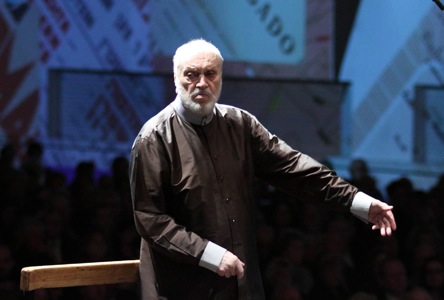 Mazur took the first movement at a rather slow, but measured pace. In the third movement, woodwinds, brass and strings combined to give a sublime account of this adagio, arguably the greatest orchestral music that Beethoven ever composed.
Mazur took the first movement at a rather slow, but measured pace. In the third movement, woodwinds, brass and strings combined to give a sublime account of this adagio, arguably the greatest orchestral music that Beethoven ever composed.
The vocal forces made their appearance in the final movement, which contains the famous Ode to Joy by Friedrich Schiller. Beethoven was never kind to his singers and the acoustically hostile environment compounded their problems. Of the soloists, the most satisfying was Ruth Ziesak, whose soaring soprano could be clearly heard above the orchestra and choir. Veteran bass Kurt Rydl did not have a good night. The real heroes were the magnificent Gary Bertini Israeli Choir and the Jerusalem Academy Chamber Choir. All told, this concert was a fitting climax to a remarkable anniversary celebration.
After this festival, it was back to business as usual with the regular subscription series. In Jerusalem, the 24-year-old Chinese virtuoso pianist, Yuja Wang, selected Rachmaninov's Third Piano Concerto, the so-called Rach 3 for her debut. Because of its technical and musical demands, this is regarded as one of the most difficult in the piano repertoire.
Yuja Wang gave an unforgettable masterful and mature performance, which completely belied her age. She brought a light touch to this work, displaying all the required virtuosity without too much showmanship. Everything flowed seamlessly from her fingers. She captured the Russian romanticism of the work whilst dispatching the many virtuosic passages with gusto and aplomb. Indeed she electrified the audience with a most memorable account of this piano concerto.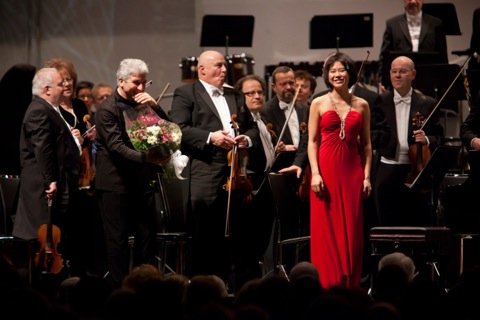 Peter Oundjian led the IPO in this concert. He was at one time, first violin of the notable Tokyo Quartet but has now branched into conducting and is currently Music Director to the Toronto Symphony Orchestra. He provided sympathetic accompaniment, although at times, orchestral participation seemed too passive and maybe a little more fire would not have been out of place.
Peter Oundjian led the IPO in this concert. He was at one time, first violin of the notable Tokyo Quartet but has now branched into conducting and is currently Music Director to the Toronto Symphony Orchestra. He provided sympathetic accompaniment, although at times, orchestral participation seemed too passive and maybe a little more fire would not have been out of place.
After intermission there was a performance of Rachmaninov's Symphonic Dances, the composer's last orchestral work. After Yuja Wang's tour de force, this was a hard act to follow. Nevertheless, Oundjian and the orchestra certainly conveyed the romantic sweep of the work. Particularly effective was the eerie and sinister waltz motive in the second movement and the Dies Irae which is part of the Roman Catholic Requiem Mass of the final movement. This was a lively performance but I would have preferred Oundjian to drive the powerful forces of the IPO to an even greater extent in the forte passages. This would have added significantly more dramatic contrasts.
Legend to Figures:
Fig 1: Veteran Conductor, Kurt Mazur (credit Dan Porges ©)
Fig 2: Yuja Wang, acknowledging applause after her concert with the Israel Philharmonic Orchestra (credit Shai Skiff)
March 2012 Archives
A riveting performance that will not be readily forgotten
Jenufa is the best known of Czech composer, Leos Janacek's operas. The young Jenufa is the unmarried stepdaughter of Kostelnicka who is a highly respected citizen in their village. In this tragic saga, Kostelnicka murders Jenufa's newly born child. She perpetrated this vile act to maintain her honour and social standing in the village. Indeed she was so concerned with her potential humiliation, that she concealed Jenufa throughout her pregnancy. Her vain attempt to maintain respectability and standing in the village, hopelessly misfired.
The Canadian Daniel Dooner revived German director, Nikolaus Lehnhoff's production originally staged for the Glyndebourne Opera. The simple but adequate sets by the German, Tobias Hoheisel, effectively portrayed the small parochial village in Moravia where the action is played out. British born Paul Hastie's lighting effects were particularly noteworthy especially in Act 2, which is set in Kostelnicka's house. This added much to the dramatic tension.
In the performance I attended, the role of Jenufa was taken by the Armenian soprano, Karine Babajanyan. Overall she gave a good portrayal of the role although her voice did sound a little strained in the lower registers. Of the male protagonists, pride of place went to the American tenor, Hugh Smith, in the role of Laca. This hapless peasant was hopelessly in love with Jenufa and he slashed and disfigured her face so that she would be rejected by his step brother Steva, who was Jenufa's lover and father of her baby. Steva was sung by the English tenor Andrew Rees whose voice was certainly up to the part, although his stage demeanour failed to convey the hard-drinking womanizer, which is so central of the role of Steva.
The success of any performance of Jenufa stands or falls on the role of Kostelnicka. Indeed so pivotal is her part that the opera could have been named after her rather than her stepdaughter. In this performance, this difficult role was taken by Israeli Mezzo soprano, Dalia Schaechter, in her debut with the Israel Opera. Ms Schaechter has a remarkably successful career in Germany and has sung roles in Munich, Berlin, Zurich and at the Salzburg and Bayreuth festivals.
Kostelnicka is centre stage in the second act which is the linchpin around which the drama revolves. It is her searing monologues and the interaction with Jenufa, Steva and Lacca that represent the very essence of the opera. Ms Schaechter's glowing account of the role is something one will not readily forget. She successfully brought out all the anger, hostility, vengeance and murderous intent, emotions which are all central to the role. But there was also pathos as in her duet with Steva, when she pleaded with him to take back Jenufa and their newborn baby but to no avail. In this duet, she and Steva complemented one another and this was one of the high points of the performance. Only at the opera's conclusion, after the frozen body of Jenufa's baby had been discovered in the melting river, did Kostelnicka show remorse admitting that she was only motivated for her own welfare and not that of Jenufa.
The Israel opera was fortunate in having Dalia Schaechter in this role and she joins the roster of illustrious Kostelnicka's in the past that I have been privileged to hear including Leonie Rysanek, Anja Silja and Eva Marton.
Lebanese born conductor, George Pehlivanian led the Israel Symphony Orchestra Rishon LeZion, the resident orchestra at the Israel Opera. He successfully coaxed the evocative music from the score and proved to be an excellent accompanist to the singers. All told this production of Jenufa was a great triumph for the Israel Opera.
Legend to the Figures
Figure 1: Act 3 of Jenufa. Photo credit: Yossi Zwecker
Figure 2: Act 2 of Jenufa with Barbara Haveman as Jenufa and Dalia Schaechter as Kostelnicka. Photo credit: Yossi Zwecker
On display are a total of 345 items from the private collection of the Museum's co-founder, Ronald Lauder
This extraordinary collection is devoted in large measure to Viennese fin de siècle paintings and drawings by Klimt, Schiele, Kokoschka, Gerstl and Kubin as well as decorative arts by Hoffmann and Moser. Of interest was a transfer drawing on black chalk and paper of Klimt's Jurisprudence, one of the paintings commissioned by the University of Vienna but never displayed because the university authorities deemed it too pornographic. The painting itself was destroyed in the Second World War. Also included were a sizable collection of more modern works from German artists including Kirchner, Heckel, Klee, Beckman, Marc, Grosz, Dix, Schwitters, Polk, Beuys, Baselitz, Richter and Kiefer amongst others.
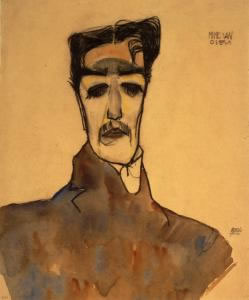 Egon Schiele (1890 - 1918)
Egon Schiele (1890 - 1918)Watercolor, gouache, and crayon on paper
The Ronald S. Lauder Collection.
Equally or perhaps even more impressive was Lauder's large collection of paintings and drawings by Picasso, Matisse, Cezanne, Manet, Klee, Kandinsky, Seurat, Cezanne, Degas and van Gogh and sculptures by Brancusi and Picasso as well as four of Matisse's woman's back series.
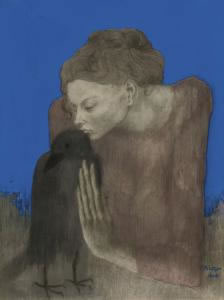
Pablo Picasso (1881-1973)
Woman with a Raven (1904)
Gouache and pastel on paper
The Ronald S. Lauder Collection, New York
© 2011 Estate of Pablo Picasso/Artists Rights Society (ARS), New York
The exhibit also included examples of medieval art and arms as well as some Old Master paintings by Albrecht Aldorfer and Quentin Massys amongst others. Lauder himself narrated the audio tour which stressed how he made some of his extraordinary acquisitions. One did however miss a more scholarly interpretation of this great art. Few if any modern private collections can rival this in its depth and breadth.
The comprehensive catalogue has scholarly contributions from several authorities with a foreword by Renee Price, Director of the Neue Galerie
On view till 2 April.
Part of this article was originally published in The Jerusalem Post on 4 March, 2012
The current MOMA exhibit celebrated the 80th anniversary of the original show and featured five of the eight original portable murals. Pride of place went to the Mexican agrarian leader Zapata with a white horse, from MOMA's own holdings. The remaining murals had been dispersed, and are housed in public and private collections in Mexico and the USA. MOMA managed to bring four of the remaining murals to this fascinating show.
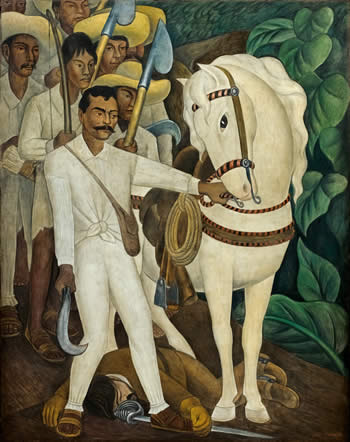 Diego Rivera (1886-1957)
Diego Rivera (1886-1957)Agrarian Leader Zapata (1931)
Fresco on reinforced cement
2011 Banco de Mexico Diego Rivera & Frida Kahlo Museums Trust, Mexico, D.F./Artists Rights Society (ARS), New York.
Conspicuously absent were two belonging to the Philadelphia Museum of Art who declined to loan them for the current exhibit. The whereabouts of the final mural is unknown.
Although this certainly left a void, MOMA made up by exhibiting three working drawings, a prototype of the portable mural as well as several watercolors, drawings and prints from Rivera's oeuvre. Rivera brilliantly conveyed the social injustices of the time as well as the exploitation of the Mexican peasants. These murals are as relevant today as they were when originally executed.
Leah Dickerman, Curator in the Department of Painting and Sculpture at MOMA and Anna Indych-López from the Art History Department, The City College of New York, have written a most informative catalogue.
On view until 14 May.
Part of this article was originally published in The Jerusalem Post on 4 March, 2012.
The Renaissance Portrait: from Donatello to Bellini
This showstopper exhibit at The Metropolitan Museum of Art was co-organized with the Berlin State Museums. Almost sixty institutions and private collectors contributed works of art to this encyclopaedic survey comprising 160 masterpieces, which stressed the Italian contribution to this genre. Besides paintings, there was also an outstanding collection of manuscripts, sculptures, coins and medallions. Most of the major Italian artists were represented including Masaccio, one of the fathers of perspective. The exhibit focused on portraits of prominent citizens of the Italian city-states with special emphasis on Florence and Venice until the beginning of the 16th century, thus excluding Titian, the greatest portraitist of them all.
It was a real revelation to see how successfully these great artists succeeded in portraying the likenesses, emotions and personalities of their sitters. By so doing, these artists jettisoned the old established norm, which consisted of portraying an idealized human subject. For me, the highlights were the two spectacular portraits by Sandro Botticelli of the famed Florentine beauty Simonetto Vespucci, as well as those of Giuliano de Medici. Giuliano's brother, Lorenzo the Magnificent, was represented by his death mask as well as a drawing by Leonardo da Vinci and some medallions.
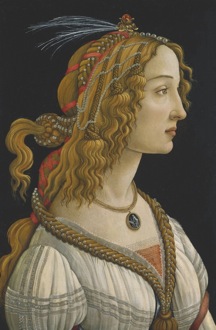 Fig 1: Sandro Botticelli (ca. 1444-1510)
Fig 1: Sandro Botticelli (ca. 1444-1510)Ideal Portrait of a Lady ("Simonetta Vespucci") (1475-80)
Tempera on poplar
Städel Museum, Frankfurt.
Two magnificent female portraits by the Florentine brothers, Antonio and Piero del Pollaiuolo, also deserve special mention.
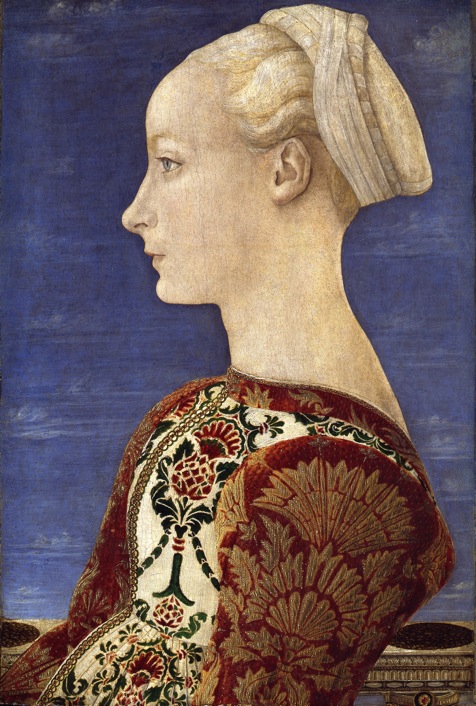 Fig 2: Antonio del Pollaiuolo (1431-1498)
Fig 2: Antonio del Pollaiuolo (1431-1498)Portrait of a Lady (1460-65)
Oil and tempera on poplar panel
Gemäldegalerie, Staatliche Museen zu Berlin.
Portraits of famous families and personalities from other city-states were also on view including the d'Este family of Ferrara, the Sforzas of Milan, the Gonzagas of Mantua and the Montefeltros of Urbino. Although the most famous portrait of Federigo, Duke of Montefeltro, by Piero della Francesco from the Uffizi was absent, the Duke was represented in a full-length portrait by Pietro di Spagna together with his son and heir Guidobaldo. The final section of the exhibit was devoted to Venice with dazzling paintings by the Bellini family, Mantegna, Carpaccio, Vivarini and Antonella de Messina.
The exhibit is accompanied by an outstanding scholarly catalogue edited by Keith Christiansen, Curator of European Paintings at The Metropolitan Museum of Art and Stefan Weppelmann, Curator of the Gemaldegalerie, Berlin.
On view till 18 March.
Part of this article was originally published in The Jerusalem Post on 4 March, 2012.
